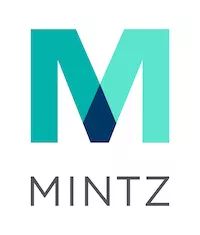- with Inhouse Counsel
Disruptive technology presents exciting opportunities for entrepreneurs and their stakeholders, from access to untapped markets to interest from investors and potential acquirers.
Looking at three case studies, this article reviews different approaches to protect and defend disruptive technology and the key considerations for developing an effective IP strategy for potentially high-value emerging tech.
Editorial disclosure: the authors' employer, Mintz, represented two companies referenced in this article: Nanoco Technologies and AMD.
Electric vehicle battery technology
The first example is the much-publicised Tesla v Matthews International case. In June 2024, Tesla filed a lawsuit against its ex-supplier Matthews International in a California district court, seeking $1 billion in damages, injunctions to prevent further sales, transfer of patent ownership and disgorgement of unjust enrichment.
Tesla alleges that Matthews stole trade secrets and tried to patent confidential information related to its dry battery electrode (DBE) technology.
Matthews contends its own engineers began developing the technology in question long before Tesla was founded. It indicates that in 2019, Telsa came to Matthews seeking technology to improve its DBE production.
Although Tesla has the financial means to litigate indefinitely, the company has the challenging burden of proving trade secret theft. If Tesla is successful, Matthews could be barred from marketing its technology to other companies. For both, a lucrative and growing chunk of the battery market is at stake.
Graphic processing unit technology
In early 2023, US chipmaker Advanced Micro Devices won a patent infringement case against a series of defendants including TCL, an electronics manufacturer partially owned by the Chinese government, at the ITC and in the Eastern District of Texas.
The case involved five patents related to graphic processing unit (GPU) technology, which accelerates graphics rendering in smart TVs. At the ITC, the presiding administrative law judge found that AMD had shown one of the two patents asserted was valid and had been infringed.
In January 2024, the Commission upheld the judge's initial determination and issued a limited exclusion order and a cease-and-desist order against TCL. The limited exclusion order blocked TCL from importing "certain graphics systems, components thereof, and digital televisions containing the same" that infringe AMD's proprietary graphics IP.
The win was significant for AMD as it allowed the company to protect its innovations. The outcome also helps discourage importers from infringing patented technologies—relief that is much sought after by companies looking to protect valuable IP.
Quantum dot technology
Another example involving smart TV technology is Nanoco Technologies v Samsung Electronics America Inc. Nanoco, a UK-based pioneer of cadmium-free quantum dots and other nanomaterials, reached a $150 million settlement with electronics giant Samsung last year. The settlement included a global, perpetual, fully paid-up licence agreement and transferring several non-core patents from Nanoco to Samsung.
The IP dispute occurred when Samsung ended its collaboration and launched its quantum dot-based televisions without entering a licensing or supply agreement with Nanoco. Nanoco alleged the Korean tech giant copied its technology after receiving samples during talks about a potential collaboration.
Having the rights to its core IP fully validated by the legal process opened the possibility for Nanoco to derive further income from the display market, either in the form of successful infringement litigation against other parties, or third parties purchasing cadmium-free quantum dots from Nanoco or its potential licensees.
Considerations for IP strategy development
While every IP strategy is and should be unique, the following considerations are critical for disruptive technology companies.
1. Conduct an IP portfolio audit
Conducting a thorough audit of all technology that has been developed, acquired and licensed is an essential first step. The process can include interviews with developers, managers and executives to identify patents, trademarks, copyrights, trade secrets and industrial designs. An IP audit provides companies with a holistic map of all IP assets, including clarity of any assets that may be jointly owned or licensed to other parties such as investors or lenders.
2. Identify high-value assets
In addition to preventing the unauthorised use of what you create, it is equally important to maximise your existing IP as an asset that can acquire value. Understanding an IP portfolio's value can help secure financing, attract partners, set appropriate licensing fees, settle disputes and provide insight for strategic decisions.
The valuation process takes the most time and expertise. It requires an in-depth understanding of which assets are potentially disruptive and will provide the most value now and in the future. At least two critical factors can significantly impact an IP asset's worth: exclusivity and potential for future benefits.
The most common approaches to IP valuation include income, market and cost. The income method is a relatively complex approach that requires in-depth financial analysis and forecasting. The market method determines the value of IP by comparing it to similar assets sold or licensed in the market. The cost method values IP based on the cost incurred to create or replace it.
3. Protect high-value assets
Of the four main IP categories—patents, trade secrets, copyright and trademarks—trade secrets and patents are most relevant for protecting disruptive technology. While an IP owner must decide between trade secret and patent protection soon after the invention of the IP, the two doctrines can work in tandem as well, with patents protecting some aspects of a technology and trade secrets protecting others.
4. Think big picture
While capturing and safeguarding innovations through patents or trade secrets is essential, so is understanding the broader economic objectives, including how the IP will evolve and how the company should prepare for future needs. It's also valuable to consider alternative use cases for IP assets, as they sometimes end up disrupting a sector inadvertently. For example, while lithium-ion batteries have become the standard for EVs, other battery chemistries may be better for large-scale applications like grid storage.
Beyond a company's proprietary technology, it is critical to monitor competitive IP portfolios, filings, litigation, licensing and partnerships. Leverage IP management software to track competitive filings, deadlines and renewals effectively, and simplify the management and documentation of intangible assets.
5. Evaluate commercialisation and monetisation
Protected IP opens doors to various monetisation strategies, including licensing and enforcement. To reap the financial benefits of their most valuable IP assets, companies need to evaluate which commercialisation models will enable them to build and sustain a lucrative business from their innovation.
Monetising IP can take various forms, such as licensing to other parties, selling IP assets or using IP to create revenue-generating products and services. An effective strategy will outline how and when to license, negotiate terms and ensure the chosen approach aligns with broader business goals.
6. Exercise care when sharing IP
Take special care when sharing IP in the context of a supplier relationship, partnership, or joint venture (JV). It is important to determine what processes are in place for addressing IP ownership considerations when collaborating with third parties.
All big tech firms have investment arms that buy, license or form joint ventures with small, innovative firms. JV agreements often incorporate IP agreements that give the investor access to a company's technology. As in the Tesla v Matthews case, manufacturing JVs or contracts that require the disclosure of trade secrets can result in ambiguity over who owns the related IP.
Ideally a company's IP position is strong enough to discourage any legal challenges. But short of that, a robust IP strategy can help ensure you will prevail if you need to defend it legally.
Originally published by IAM
The content of this article is intended to provide a general guide to the subject matter. Specialist advice should be sought about your specific circumstances.



